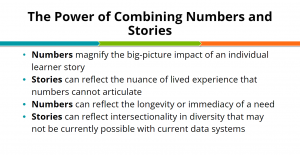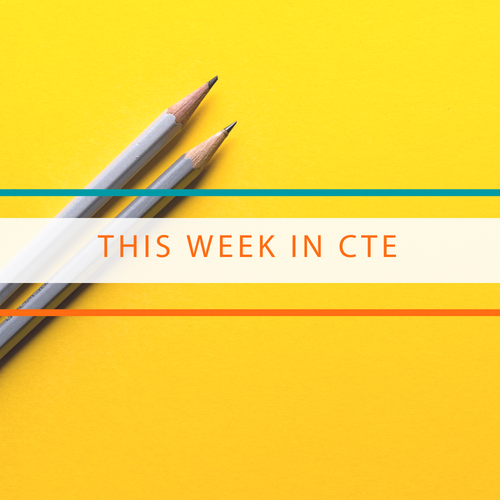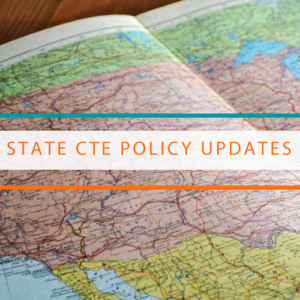Over the past two weeks, lawmakers in Congress have grappled with several intertwined issues including the debt ceiling, FY22 appropriations, and continued debate over the scope and content of President Biden’s Build Back Better Agenda.
 Short-term Agreement on FY22 Appropriations
Short-term Agreement on FY22 Appropriations
On September 30, lawmakers passed short-term funding legislation, known as a continuing resolution (CR), that extends current funding levels for federal programs, like Perkins V, through December 3 for the current federal fiscal year (FY22). The measure ensures that Congress will avoid a shutdown of federal government operations and disruptions to education and workforce development programs, at least for the time being. Democratic lawmakers had hoped to tie a debt ceiling increase to this measure, but Senate Republicans unanimously rejected this approach. With the debt ceiling provision removed, the Senate and House overwhelmingly passed the short-term measure with President Biden signing it into law later that evening.
Nation’s Borrowing Limit Extended
Following the passage of the CR, Congressional Democrats turned their attention back to the issue of the national debt limit—the total allowable amount of money the U.S. Treasury Department is statutorily permitted to borrow to pay the nation’s debts. Failure to raise or suspend the debt limit would result in a catastrophic default on the nation’s debt. Until Wednesday, Senate Republicans remained unanimously opposed to addressing this issue, arguing that Congressional Democrats should achieve this via the Congressional budget reconciliation process. With time running short, however, Senate leaders announced that they had reached an agreement to modestly increase the nation’s borrowing authority by $480 billion.
The agreement, at least temporarily, ensures that the nation will avert a default on its debt obligations. The short-term agreement is intended to provide additional time for lawmakers to determine a longer-term solution for the debt limit. Significantly, the agreement likely means that the debt ceiling will need to be addressed again around the same time that lawmakers must determine full-year funding for the federal government and related programs for the current federal fiscal year (FY22).
Reconciliation Remains in Limbo
Vigorous debate within the Democratic Party remains fluid and ongoing regarding Congressional Democrats’ efforts to pass a domestic spending bill—known collectively as the Build Better Act agenda—via the Congressional budget reconciliation process. This process allows certain legislation to be passed by simple majorities in both chambers, thereby avoiding a likely Republican filibuster in the Senate. Most recently the House Budget committee repackaged the various component pieces of their $3.5 trillion proposal into a single bill for further consideration— a proposal which includes $4 billion in additional funding for the Perkins V and related programs.
However, progress on the legislation remains stalled as progressives and moderates within the Democratic party continue to disagree on the timing of a vote for this legislation, the contents of the package, and its overall size. It is widely expected that the topline figure of $3.5 trillion will likely be decreased prior to final passage. At present, Democratic Congressional leaders hope to finalize a deal on this package, along with additional infrastructure legislation, by the end of October.
Second Funding Window for Connectivity Funds
On September 29, the Federal Communications Commission (FCC) announced the opening of a second application filing window for the Emergency Connectivity Fund (ECF) program. Created as part of the American Rescue Plan (ARP), the ECF Program allows eligible schools and libraries to apply for financial support to purchase connected devices like laptops and tablets, Wi-Fi hotspots, modems, routers, and broadband connectivity to serve unmet needs of students, school staff, and library patrons at home during the COVID-19 (coronavirus) pandemic.
This second opportunity to apply for funding will remain open through October 13. Eligible schools, libraries and consortia will be able to submit requests for funding to make eligible purchases between July 1, 2021 and June 30, 2022. More information on how to apply can be found here.
USED Proposes New Maintenance of Equity Implementation Requirements
On October 5, the U.S. Department of Education (USED) published two notices in the Federal Register regarding the ARP’s maintenance of equity requirement (MOEq). The first notice outlines a set of new data reporting elements regarding a new requirement that states publish information demonstrating that high-poverty school districts are not receiving disproportionate cuts to local school budgets. The second requests information from states and districts regarding the feasibility of this proposed requirement. This MOEq requirement was a condition for states receiving ARP money. More information on these notices can be found here and here.
Senate Confirms New USED Nominees
On Wednesday, October 6, the Senate voted to confirm three high-level nominees for positions within the USED. Those approved for positions included Gwen Graham, who will oversee the Department’s Office of Congressional and Legislative Affairs as Assistant Secretary; Elizabeth Merrill Brown, who will serve as USED’s General Counsel; and Roberto Rodriguez, who will oversee the Department’s Office of Planning, Evaluation, and Policy Development.
There are a number of other USED appointees still awaiting Senate confirmation. This includes Amy Loyd, who has been nominated to be the next Assistant Secretary for the Office of Career, Technical, and Adult Education (OCTAE)—a nomination Advance CTE has strongly supported earlier this year. At present, it remains unclear when Loyd’s nomination will be approved by the Senate.
USED Approves Four More ARP Plans
The ARP, passed exclusively by Congressional Democrats earlier this year, authorized $122 billion in additional pandemic aid funding to be disbursed to K-12 schools this past spring. USED has since distributed two-thirds of this funding to states via a formula detailed in the legislation. The Department held back the remaining third of these funds, however, until states and territories submitted plans detailing how they would make use of these resources to support students as they recover from the impacts of the ongoing coronavirus pandemic. As part of this ongoing effort, USED approved four more of these plans on Thursday, October 7, sending these additional funds to Arizona, Michigan, Missouri, and Wyoming. The current status of all state ARP plans, including highlights of plans approved by USED so far, can be found here.
Kimberly Green, Executive Director
 Kevin Imes’ 36-year career in public education covers a diverse range of experiences. From the beginning of his career as a Biology teacher in downtown Phoenix schools to his role in opening a magnet program, an alternative school, a comprehensive high school and a public CTE district from the ground up, Kevin’s expertise in program development lends itself well to his new position as State CTE Director.
Kevin Imes’ 36-year career in public education covers a diverse range of experiences. From the beginning of his career as a Biology teacher in downtown Phoenix schools to his role in opening a magnet program, an alternative school, a comprehensive high school and a public CTE district from the ground up, Kevin’s expertise in program development lends itself well to his new position as State CTE Director.

 With over 30 gubernatorial elections and legislative elections in all but four states, 2022 will likely lead to
With over 30 gubernatorial elections and legislative elections in all but four states, 2022 will likely lead to  This session featuring Advance CTE and Edge Research inspired attendees to amplify learner outcome data and testimonials to create impactful data stories. Attendees were reminded to be in the driver’s seat on creating data ‘headlines’’ and to be proactive in addressing assumptions others might make about data. First step routines were also provided, such as mapping schedules for quantitative and qualitative data collection, quantitative data reporting and qualitative data access opportunities and comparing timelines with storytelling opportunities.
This session featuring Advance CTE and Edge Research inspired attendees to amplify learner outcome data and testimonials to create impactful data stories. Attendees were reminded to be in the driver’s seat on creating data ‘headlines’’ and to be proactive in addressing assumptions others might make about data. First step routines were also provided, such as mapping schedules for quantitative and qualitative data collection, quantitative data reporting and qualitative data access opportunities and comparing timelines with storytelling opportunities.  Edge Research provided storytelling tips — one included creating three to five headlines that encompass a data point audiences might not expect, highlight the most urgent findings, and provide a call to action. It is important to humanize qualitative data through phrases such as ‘1 out of X families’ or ‘X number of children need Y’.
Edge Research provided storytelling tips — one included creating three to five headlines that encompass a data point audiences might not expect, highlight the most urgent findings, and provide a call to action. It is important to humanize qualitative data through phrases such as ‘1 out of X families’ or ‘X number of children need Y’.  Without Limits: A Shared Vision for the Future of Career Technical Education
Without Limits: A Shared Vision for the Future of Career Technical Education Short-term Agreement on FY22 Appropriations
Short-term Agreement on FY22 Appropriations Developed with input from nearly 200 national, state and local education and workforce development leaders and supported by 40 national organizations,
Developed with input from nearly 200 national, state and local education and workforce development leaders and supported by 40 national organizations,  On the state and federal level, COVID-19 (coronavirus) fundamentally changed the conversation about education, significantly disrupting and refocusing state legislatures. Despite this, Career Technical Education (CTE) adapted to the challenges brought about by the coronavirus, continuing to deliver high-quality programming nationwide across all learner levels despite significant disruptions to education delivery. Because the pandemic was on the forefront of federal, state and local governments’ agendas, fewer policies and budget provisions for CTE were enacted than in previous years; in calendar year 2020, 31 states enacted or passed 67 policy actions related to CTE and career readiness.
On the state and federal level, COVID-19 (coronavirus) fundamentally changed the conversation about education, significantly disrupting and refocusing state legislatures. Despite this, Career Technical Education (CTE) adapted to the challenges brought about by the coronavirus, continuing to deliver high-quality programming nationwide across all learner levels despite significant disruptions to education delivery. Because the pandemic was on the forefront of federal, state and local governments’ agendas, fewer policies and budget provisions for CTE were enacted than in previous years; in calendar year 2020, 31 states enacted or passed 67 policy actions related to CTE and career readiness. Many states are in the process of planning for learners to physically reenter school and college in the fall. However, the possibility of a
Many states are in the process of planning for learners to physically reenter school and college in the fall. However, the possibility of a  Many governors leveraged their State of the State Addresses to address CTE funding. In Maine,
Many governors leveraged their State of the State Addresses to address CTE funding. In Maine,